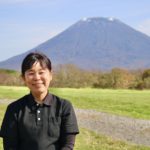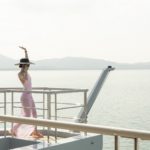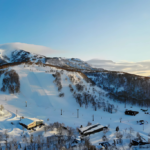Niseko is skiing goals. Between the world’s finest powder and the wide array of apres-ski activities, it really must be done. To get you from dreaming of cloud-like powder to actually frolicking through the snowfields, here’s our round-up of everything you need to know for your first (or second) Niseko trip.
#1 When to Go

Niseko’s ski season stretches a good long while with the slopes open from late November to early May.
Before Christmas
The area is renowned for having great snow early in the season. Beginning late November, there is generally enough powder on the mountains for even those who’d like the cushiest of falls. It’s also pretty quiet around this time. Lift tickets are discounted until about early-December because of the limited competition for the fresh stuff.
Christmas to New Years & Chinese New Year
Unsurprisingly, Christmas, New Years and CNY are the most popular times to be on the slopes. If you’re looking to go to Niseko around these periods, make sure to book accommodation early! Lots of stays are booked out by June.
January
January is the time when Niseko powder is at its finest. Snow absolutely buckets down! If you’re going off-piste, it wouldn’t be surprising to find yourself skiing over a tree at one point or another.
If you think it won’t be busy in Niseko in January, however, you’re forgetting about all the Australians on school holidays. January is the peak time for the Aussies to go, so it’s great if you’re Aussie or looking for an Aussie spouse – not so much if you’re looking for empty trails.
February
If you want the January snow without those on school holidays around, February is the month for you! Early February tends to get similar snow falls to January, but the holidays are finished, and you get more of the slopes for yourself. Late February has somewhat less snow, but it’s still that creamy powder you dream of.
If you’re looking for competition on the slopes, just take into account the Chinese New Year holidays, which sometimes fall in February.
March
Everyone’s gone home, and blue skies can be found. There’s generally less snowfall now, but there are still plenty of powder days, which, mix nicely with some warmer weather. There’s limited competition for powder, and because of the beautiful weather, this is the time to grab a guided tour and head out into the backcountry.
April – May
If you like your Niseko holidays cheap, April – May is the time to ski. These months are all about low costs, no crowds and pleasant weather. There is likely to be enough powder on the slopes still too. The downside, however, is that some slopes, most ski schools, rental shops and restaurants will have shut down for the season.
#2 What to Pack
Take care and keep warm! Niseko’s average annual max temperature is 11.0° C.
If you’re going early or late in the season, you might not need to worry as much about staying warm, but you’ll want to layer up regardless. January, the coldest month, for example, has an average minimum temperature of -6.0° C and max temperature of 0.0° C. It’s still not all that warm by the time April rolls around. Niseko in April has an average minimum temperature of 1.0° C and a maximum temperature of 8.0° C
That said, you’ll need plenty of thermals and long layers. For outer layers, we love ski suits and ski pants with higher waists to look good and keep warm! With the inner layers, try to find lightweight jackets to keep the bulk down, so it’s easier to move, but remain toasty. You should also remember to take a good pair of walking boots to get around town. And if you’re going near peak season, bring yellow lens goggles! These will help you see more when the snow is coming down.
Read also: Ski Fashion: Sandy Ip of The Ski Project tells us how to look great on the slopes
#3 How to get there

When you’re flying into Niseko, the easiest way to go is via New Chitose Airport outside of Sapporo (Japan’s 5th largest city). The airport is 110km from Niseko, which might not seem close, but there are plenty of ways to get into town.
The easiest way to get into Niseko, if you’re not getting a private transfer from your accommodation that is, is to go via bus. Private shuttle buses can be arranged with SkyExpress and Yohtei Taxi. If you’d instead go public, you can catch a ride into town with Hokkaido Resort Liner Ski Bus, NGS Big Runs, or White Liner Ski Bus.
Alternatively, if you’re looking for a more “scenic” option and are coming from the Japanese mainland (Niseko is on the island of Hokkaido), there are several ferry companies, like MOL Ferry that journey to Hokkaido. From the port, you can grab a train or bus to the slopes.
#4 Where to stay

Hirafu Village
If you want easy access to the mountain, stay in Hirafu Village. The village is really its own city at the base of the Grand Hirafu, with tons of restaurants, bars and shopping.
There are three tiers within the village – Upper, Middle and Lower Hirafu. Upper Hirafu is the closest to the slopes with several ski-in-ski-out accommodations and easy access to restaurants. Lower Hirafu, meanwhile, is the furthest area of Hirafu Village from the slopes, but everything is still easily accessible. As well, most of the larger designer homes in Niseko can be found in Lower Hirafu – perfect for big groups.
Wherever you stay in Hirafu Village, you’ll have great ski access as there is a very well developed shuttle system that makes it easy for you to wander (more on this below).
St. Moritz (Kabayama)
If you don’t want to be in the centre of it all, and would rather enjoy some tranquillity when you’re not tearing up the slopes, head to St. Moritz. The area is still close to it all, as it’s only a 5-minute drive to Hirafu Village, but here you can feel like a local, rather than a tourist.
If you don’t have a car, St. Moritz is walking distance to Hirafu Village. You can also take advantage of the public shuttles which run regularly.
Read also: Luxe stay review: Roku
#5 The Resorts

Niseko is actually home to four different ski resorts, which are all interconnected and on the one mountain, Niseko Annupuri. Collectively, they are called NISEKO UNITED, and you have the option of buying lift passes for one or two resorts or all four. From a cost perspective, having lift passes for all four resorts makes the most sense, but that is entirely dependent on your level of comfort with skiing or snowboarding and what you’re looking to do.
Each resort has its own unique characteristics, meaning you can pick and choose which resort works best for you based on your skill level and desires.
Hanazono Resort
Looking to the map, Hanazono is the resort furthest to the right. There are only three lifts in this resort, but Hanazono tends to have the best powder as it is the most north-facing of the four. It’s also home to one of the largest terrain parks in Hokkaido if you’re into a bit of freestyle skiing and boarding.
Grand Hirafu
Grand Hirafu is one resort to the left of Hanazono and home to some of the largest ski pistes in Japan. There’s a wide range of runs and facilities that can be enjoyed by both beginners and more advanced skiers. It’s also at the base of Grand Hirafu that you’ll find Hirafu Village and with it, the vast majority of Niseko’s restaurants, stores and hotels.
If it’s your first time to Niseko and you’re not sure which resort you would prefer, Grand Hirafu is likely the best choice for getting started in the region.
Niseko Village
One more resort over and you’ll find Niseko Village. This resort is geared towards intermediate and advanced skiers and snowboarders. With steep slopes and gorges, this is the place for those looking for a bit more of a challenge.
Niseko Annupuri International
Finally, if you’re a beginner or with small kids, you’re most likely to feel comfortable at Niseko Annupuri. This resort is all about wide runs and gentle slopes. It’s also very easily accessible from Niseko Village and Grand Hirafu if you decide to transition between resorts.
#6 How to Get Around
Much of the accommodation in the Niseko area offers complimentary shuttle bus services for their guests. There are also a few free shuttle services, like the Hirafu Village Grand Shuttle Bus. As well, Niseko United’s Shuttle Bus is free to holders of a Niseko United All Mountain Pass (the lift pass for all four resorts). The Niseko United Bus service moves people not only around Hirafu Village and the four resorts for the skiing but to Kutchan city.
If you prefer a taxi, the local taxi company, SPRINT Taxi & Hire, can be arranged in advance via the app, TaxiCaller.
Read also: Beyond the Slopes: 7 things to do in Niseko even if you’re not skiing
#7 Renting Gear

If you don’t feel like taking gear around the world with you, there are several rental shops throughout Niseko that provide high-quality snow supplies. We prefer the service and convenience of YamaSport, Niseko Sports, and Rhythm Rentals.
We love YamaSport at it has three locations in Skye Niseko, Landmark View and Yama Shizen – easy access for those who would like to ski at both Gondola and Family bases. It’s a new entrant to the rental market and their gear was brand new for the 2018-19 ski season, so they’re in top condition! YamaSport is offering an early bird promotion of 25% off rack rates for the 2019-20 season if you book before 31 July 2019*.
Rhythm Rentals is also a great alternative. They’ve recently opened their second location, which is twice the size of their first and located within 150 metres of the Hirafu Gondola and the Ace Quad Chair! We particularly love that they allow for multi-resort bookings so that you can use the same equipment in both Niseko and Hakuba! They also have an early bird deal for the 2019-20 season of 15% gear if you book before 31 July 2019*.
Niseko Sports as it has three locations, free overnight storage (great for if you don’t want to lug your gear around), and equipment transfer from Grand Hirafu to Hanazono if you’re taking lessons in Hanazono with NISS (more on that below). Niseko Sports currently has an early bird deal of 15% gear if you book before 30 September 2019 and ski between 1 December 2019 and 5 April 2020 (pretty much the entire season)*.
If you need help, The Luxe Nomad‘s complimentary concierge can help organise all your gear!
#8 Organising Lessons

There are plenty of ski schools in the area accommodating children and adults alike, whether beginner, intermediate or those who just want to perfect their technique (and maybe learn some freestyle skiing).
We particularly love GoSnow which is the only international ski school in Niseko that provides their students with Priority Lift Lane access (hello less waiting and more slope time!). The school also has private learning areas for kids and three magic carpets for beginners. Plus, the school is currently offering discounts of 10% on 2019-20 season bookings made before 31 July 2019.*
If you prefer the Hanazono side of the mountain, the Niseko International Sports School is an excellent option for lessons. NISS, as they’re more commonly known, is a family-focused lesson provider that caters to international guests. Although most lessons are conducted in English, they also have Japanese, French, Spanish, Portuguese, Italian and Dutch language options. NISS is also offering discounts of up to 15% on their 2019-20 group lessons if you book before 30 September 2019.*
#9 Booking restaurants
Niseko is a foodies paradise! The region is famous for tons of treats and eats that you can’t get anywhere else and new restaurants pop up each season. The only thing, though, is that restaurants here are typically small so they can be challenging to get into, especially considering how big the crowds get.
As soon as you know you’re going, it’s wise to start booking your dinners! (Or book your stay with The Luxe Nomad, and let the complimentary concierge do the rest).
Read also: The Ultimate Gourmet Experience in Hokkaido with Ian Fong, owner of HOKKAIDian Homestead
#10 Money Concerns

In Japan, cash is king. The country still prefers the use of cash, and it can be tricky to get around if you don’t have any on hand. The Niseko area is leading Japan’s charge in changing from a cash to a cashless society; however, it’s not fully there yet. Most hotels and restaurants are now able to accept VISA, MasterCard and American Express but many places don’t. Be sure to have cash with you when you go out and about.
Happily, you don’t need to arrive in Niseko with a giant wad of Yen in your pocket. There are plenty of ATMs in the area that accept international cards, and they’re pretty readily available. All you have to do is walk into a 7/11!
Ski-cation, all we ever wanted! Ski-cation had to get away!
*T&Cs apply.






Mahalo for this fantastic information!!!!! I am planning a Niseko spring break holiday and this helps!!!!
So happy to hear that! I hope you have a great holiday!